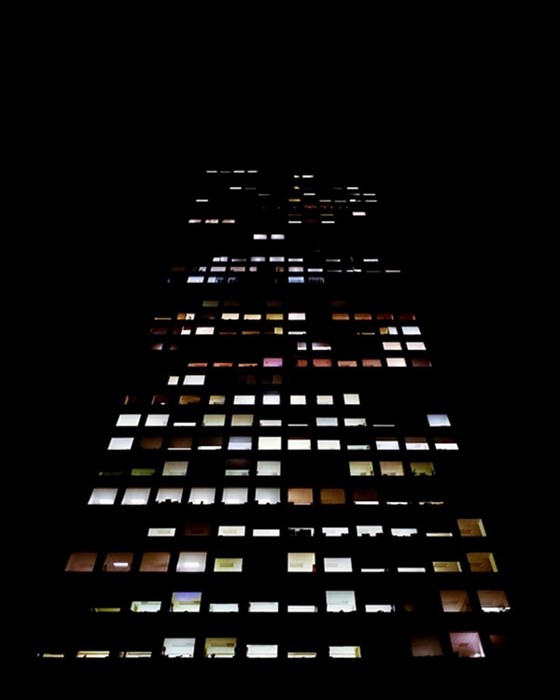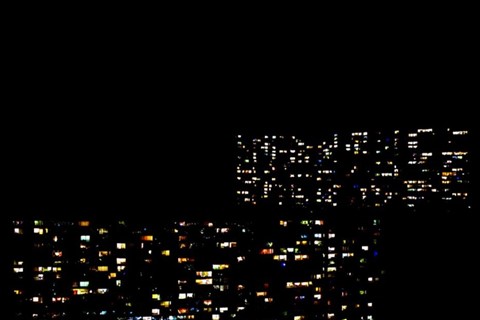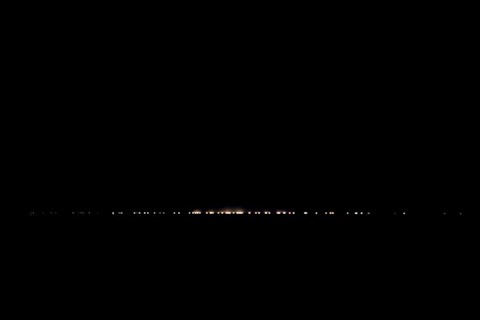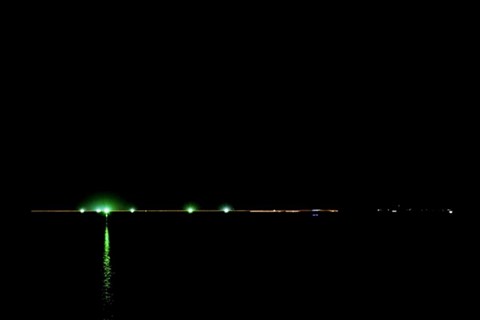James Reeve, a British photographer based in Marseille, can now enjoy a wider audience, with his work having been used in Dries Van Noten's S/S12 collection, shown in Paris earlier this week...
James Reeve, a British photographer based in Marseille, can now enjoy a wider audience, following the incorporation of his work into Dries Van Noten's S/S12 collection, shown in Paris earlier this week. He has travelled much of the world undertaking a number of commissioned assignments and personal projects; one of which, Lightscapes, was selected for inclusion at the Hyères International Festival of Fashion & Photography in 2010. The series is an innovative exploration of different cities by night, which centres not upon the pre-existing landscapes but instead upon the new and visually mesmerizing ‘lightscapes’ created by the city lights as they penetrate their black, nighttime canvas. It was at Hyères that Reeve caught the eye of Van Noten, president of the fashion jury that year, whose captivation with the Lightscapes images was such that he has gone on to include eight of them in his latest collection. Van Noten is renowned for imaginatively mixing various cultural and historical references within his designs, as well as for his successful use of clashing patterns. In this instance, he has used a range of diversely sourced prints (from Arcadian seascapes to Reeve’s photographs) transferred to fabric and offset against unusual silhouettes. For these, Van Noten drew inspiration from the Italian and Spanish 1950s haute couturiers and their wonderfully voluminous creations – most notably those of the great Cristóbal Balenciaga. Here, AnOther talks to Reeve about how the collaboration came about, his involvement in the design process and his opinion on the final pieces.
When did Dries Van Noten approach you with the idea of incorporating your photographs into his S/S12 collection?
Dries contacted me earlier this year and invited me to Antwerp to propose an ‘idea’ to me for his next collection. It was all a big mystery until I arrived at his showroom where he had already laid out large-scale prints of images pulled from my website, so I could see his idea for the collaboration. It was still difficult for me to imagine the images on garments but of course that side of the process is very much Dries’ forte.
What kind of involvement did you have in the project?
From the beginning Dries wanted me to be involved in the whole process and to be happy with the way the images were treated. He was completely in agreement with me that the work should not be cropped or retouched in any way. I have really appreciated the respect that he has given both to me and to my work. For the fabric prints I worked closely with Lilly Heine, who studied at Central Saint Martins and is now the print designer at Dries. I sent Lilly the eight images Dries chose and then I went over to Antwerp to check the print quality of the fabric tests. The quality is amazing, in fact I was really surprised because these images are incredibly hard to print because there is so much black in them. They achieved a very high standard of print, with no banding, onto a wide range of materials like cotton, silk and canvas.
Did you attend the show in Paris? What did you think of the final outcome?
Yes, I was front row so I had a great view of the catwalk. Dries printed one of my images onto traditionally developed transparency film for the invitation, it was a nice teaser for the show and everyone came in carrying a small print of mine, which was great to see - they are beautifully made with a simple white frame. It was the first time I had seen the whole collection so it was really exciting to see the models wearing my images, quite surreal actually. I really like some of the simpler more elegant pieces, particularly a sleeveless dress that has a solid band of white around the lower section. I also like the skirts with ruffles, which push and pull the image against itself when it moves, they look really beautiful. The pieces where Dries used Swarovski crystals to represent the windows of my La Rouviere image was a really inspired idea I thought.
What was the inspiration behind Lightscapes?
I have always loved shooting during twilight and on into the hours of darkness, and this project was very much an evolution of my previous work. I have experimented a lot with different techniques of shooting at night, particularly long-exposure photography. I am a big admirer of Darren Almond’s Full Moon series, it is a very poetic body of work. For my Lightscapes series my inspiration came very much from the night itself. I wanted to approach shooting at night in a different way and embrace the darkness. Even more than that, I wanted to make it such a strong and imposing element of each image that it threatens to envelope these small scars of light that are fighting to pierce the darkness.
What are your plans for future projects and what other good collaborations could you envisage for your photographs?
I am working on two new landscape projects at the moment, one of which requires a lot of travelling and the other requires a lot of funding, so I need time for one and a generous benefactor for the other! Now that I have seen some of the images from the series translated onto a 3D form, it is definitely easier to imagine them taken out of the 2D environment that they normally reside within. I think it could be interesting to collaborate with another artist to create an installation. When I look at some of the images, particularly the Gulf of Thailand series, the lights feel almost like rhythmic pulses, so I would be interested as well to see if a musician could interpret the images in some way. I am very open to new ideas.
Text by Daisy Woodward






